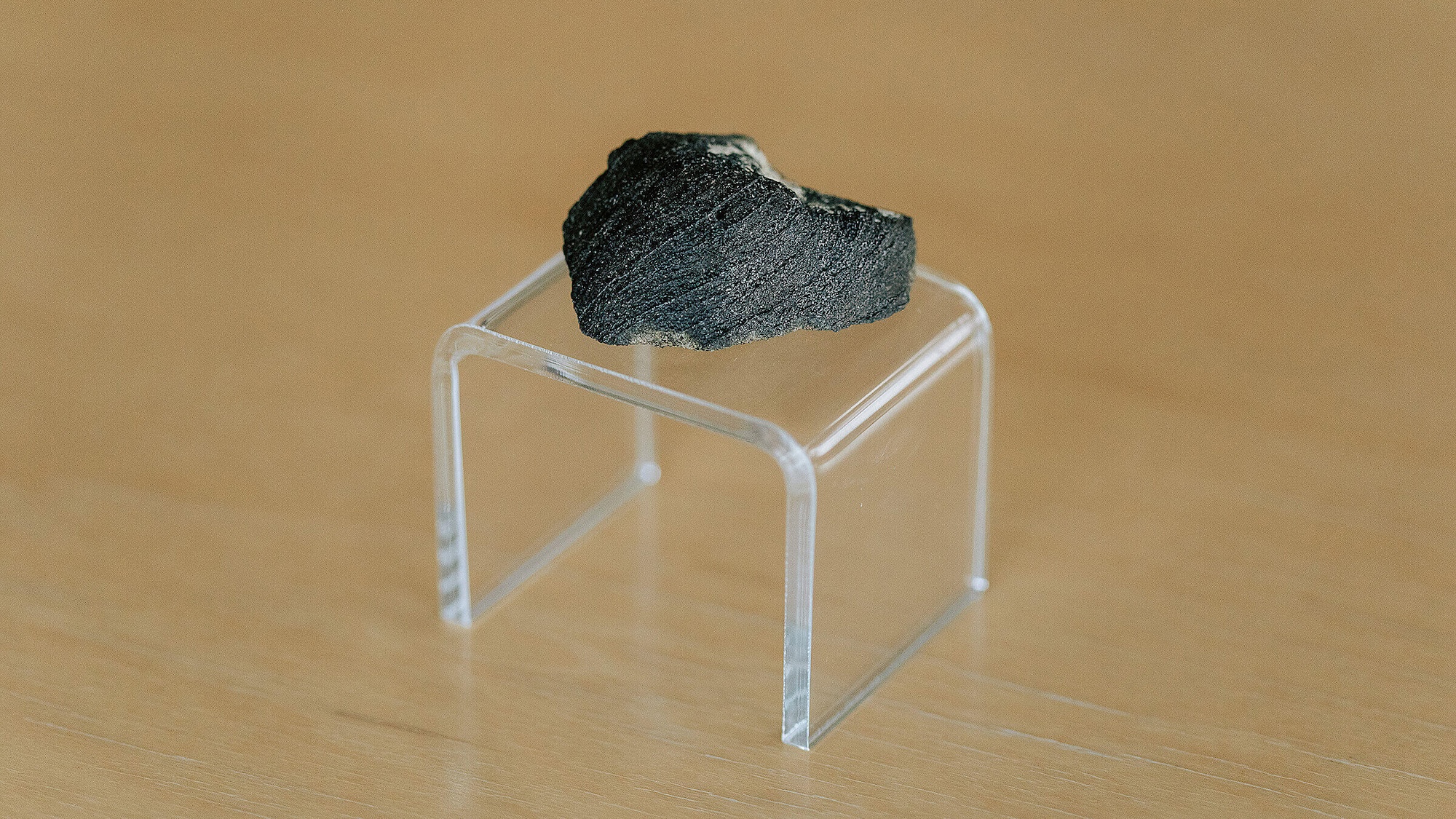

A sliver of Martian rock that once lay hidden in a university drawer has helped researchers better understand the Red Planet’s geological history. Using isotopic dating, a team at Purdue University has determined that the “Lafayette Meteorite” likely interacted with liquid water approximately 742 million years ago.
It was a long journey to this discovery, however, and one that happened partially by chance. About 11 million years ago, an asteroid collided with Mars, sending plumes of debris beyond the planet’s atmosphere. One of those meteorites eventually succumbed to Earth’s gravitational pull after a lengthy journey through space, sending it on a trajectory that ended in Indiana. Although the exact dates of its arrival and discovery are unclear, the penny-sized bit of rock somehow found its way into a Purdue University biology department desk drawer, where faculty uncovered it in 1929.
Sometime in the 1980s, unnamed parties donated the Lafayette Meteorite (named after its location) to Chicago’s Field Museum. There, experts matched gasses trapped within the rock to those detected in the Martian atmosphere by NASA’s Viking spacecraft. Additional analysis indicated minerals in the meteorite at one point interacted with liquid water on Mars, although a specific timeframe couldn’t be established.
That mystery appears finally solved thanks to researchers in Purdue University’s Department of Earth, Atmospheric, and Planetary Sciences (EAPS). In a study published on November 14th in Geochemical Perspective Letters, the experts explained that isotopic dating and analysis provides chemical evidence that the Lafayette Meteorite mostly likely interacted with liquid water while the rock first formed roughly 742 million years ago. But that’s not to say Mars necessarily hosted vast oceans and rivers—or at least not during that era.
“We do not think there was abundant liquid water on the surface of Mars at this time,” Marissa Tremblay, an assistant professor in EAPS and study lead author, said in a university profile earlier this month. “Instead, we think the water came from the melting of nearby subsurface ice called permafrost, and that the permafrost melting was caused by magmatic activity that still occurs periodically on Mars to the present day.”
Researchers also made sure to account for any potential contamination that may have occurred while the meteorite spent 11 million years in space.
“The age could have been affected by the impact that ejected the Lafayette Meteorite from Mars, the heating Lafayette experienced during the 11 million years it was floating out in space, or the heating Lafayette experienced when it fell to Earth and burned up a little bit in Earth’s atmosphere,” Tremblay explained. “But we were able to demonstrate that none of these things affected the age of aqueous alteration in Lafayette.”
In the future, researchers believe similar dating methodologies could one day be applied to not just other meteorites, but planets. In doing so, they hope to potentially discover evidence of water elsewhere.
